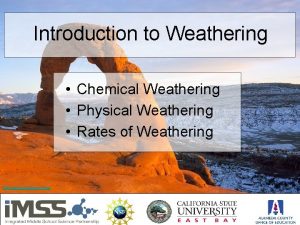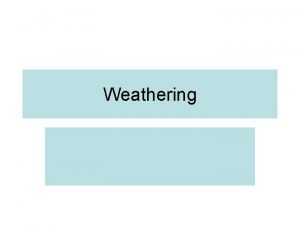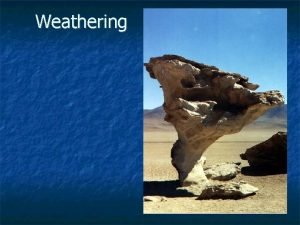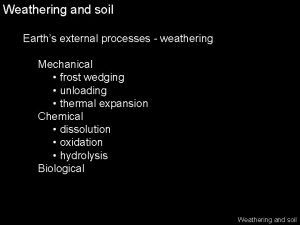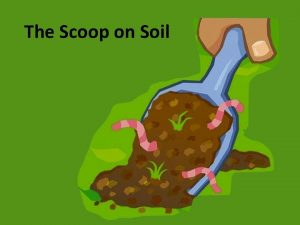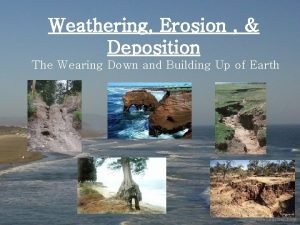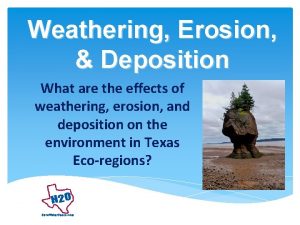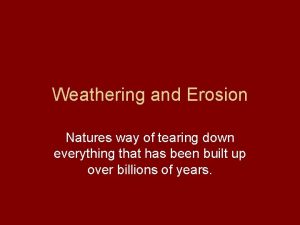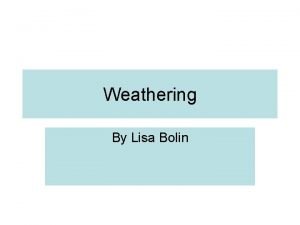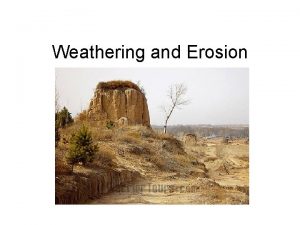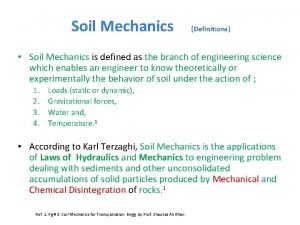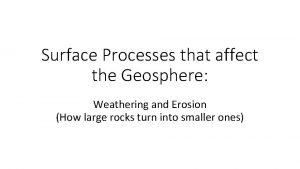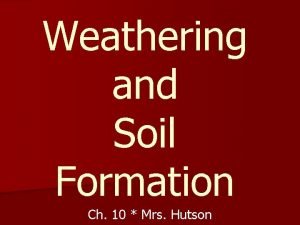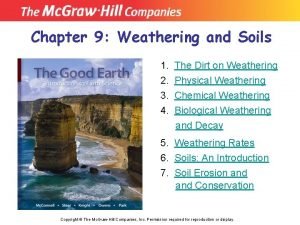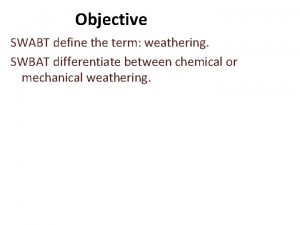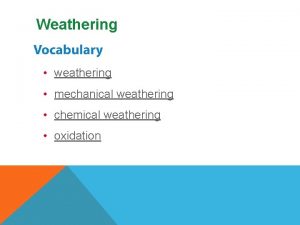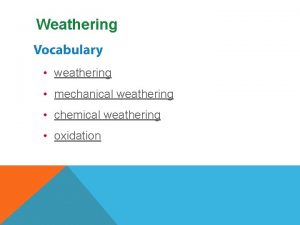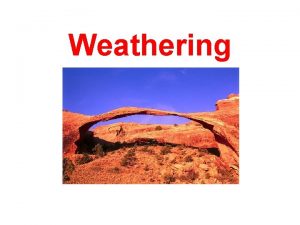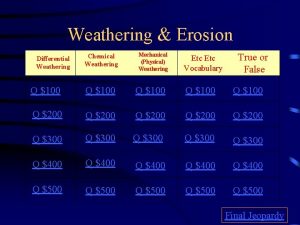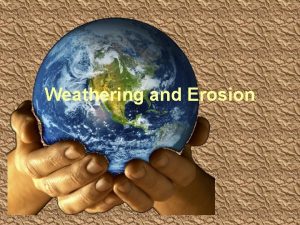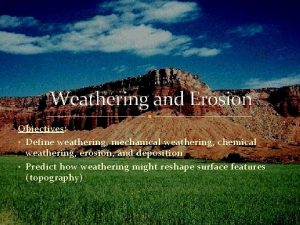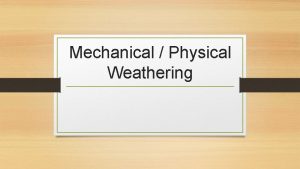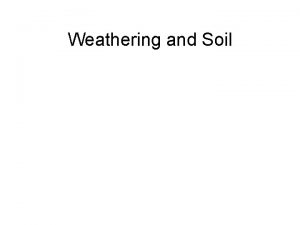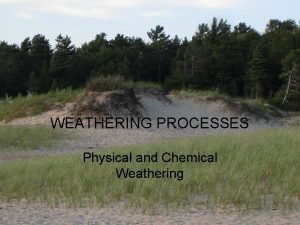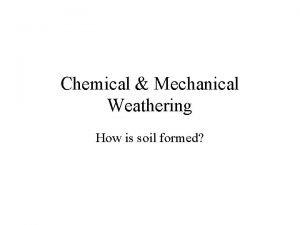Weathering Ch 12 Chemical Mechanical Weathering Weathering the
















- Slides: 16

Weathering Ch. 12

Chemical & Mechanical Weathering • Weathering - the breakdown of rock. • Mechanical (PHYSICAL) Weathering – breakdown of rock into smaller pieces by natural agents. • Chemical Weathering – breakdown or disintegration of rock by chemical reactions.

Rate of Weathering What affects the rate of weathering? 1. Surface exposure – how long is the rock exposed to the elements (wind/water)? 2. Composition of Rock – what minerals is the rock made of? (Some minerals weather at different rates) 3. Climate – certain climates promote different types of weathering Wet climates favor chemical weathering (tropical) Dry climates favor mechanical weathering (deserts)

MECHANICAL & CHEMICAL WEATHERING FOLDABLE

METHODS OF MECHANICAL WEATHERING

Mechanical Weathering: ICE/WATER • Frost/ice wedging – water gets into cracks, freezes and expands, thaws and contracts.

Mechanical Weathering: ABRASION • Water, wind, ice, and gravity move rock. As they scrape against surfaces and move against each other they SCRAPE and wear them down. • “SANDPAPER”

Mechanical Weathering: PLANTS/ANIMALS • Root wedging - plant roots grow into rock and break them. • Animals burrow into cracks of rocks and break them.

Animals weathering rock.

Mechanical Weathering: UPWARD EXPANSION • Uplift – upward force inside earth, causes rock to break in layers parallel to surface known as exfoliation. • Thermal expansion – rocks are heated, expand contract, peeling off layers.

METHODS OF CHEMICAL WEATHERING

Chemical Weathering: CARBONATION • Carbonic acid (common acid dissolved in water) seeps through the ground and dissolves certain minerals. Dissolves CALCITE completely! • CALCITE is in limestone and marble.

Luray Caverns, VA

Chemical Weathering: OXIDATION • Chemical reaction of OXYGEN (O) with other substances, especially IRON (Fe). • When O + Fe = rust.

Chemical Weathering: HYDROLYSIS • Water reacting with minerals by dissolving the ions in them and reacting with the water to form clay minerals. • (FELDSPAR)

Chemical Weathering: BIOLOGIC BREAKDOWN • Plants/animals sometimes secrete acid which can chemically weather rock. • Moss/lichens
 Introduction to weathering
Introduction to weathering Type of weathering
Type of weathering Mechanical and chemical weathering examples
Mechanical and chemical weathering examples Eluviation and illuviation
Eluviation and illuviation Mechanical and chemical weathering
Mechanical and chemical weathering Weather ing
Weather ing Mechanical and chemical weathering venn diagram
Mechanical and chemical weathering venn diagram Chemical and mechanical weathering venn diagram
Chemical and mechanical weathering venn diagram Compare and contrast mechanical and chemical weathering
Compare and contrast mechanical and chemical weathering Mechanical and chemical weathering
Mechanical and chemical weathering Mechanical and chemical weathering venn diagram
Mechanical and chemical weathering venn diagram Define soil mechanics
Define soil mechanics Mechanical and chemical weathering
Mechanical and chemical weathering Saltine cracker digestion lab
Saltine cracker digestion lab Venn diagram of chemical and mechanical weathering
Venn diagram of chemical and mechanical weathering Mechanical and chemical weathering venn diagram
Mechanical and chemical weathering venn diagram Define the term weathering?
Define the term weathering?
